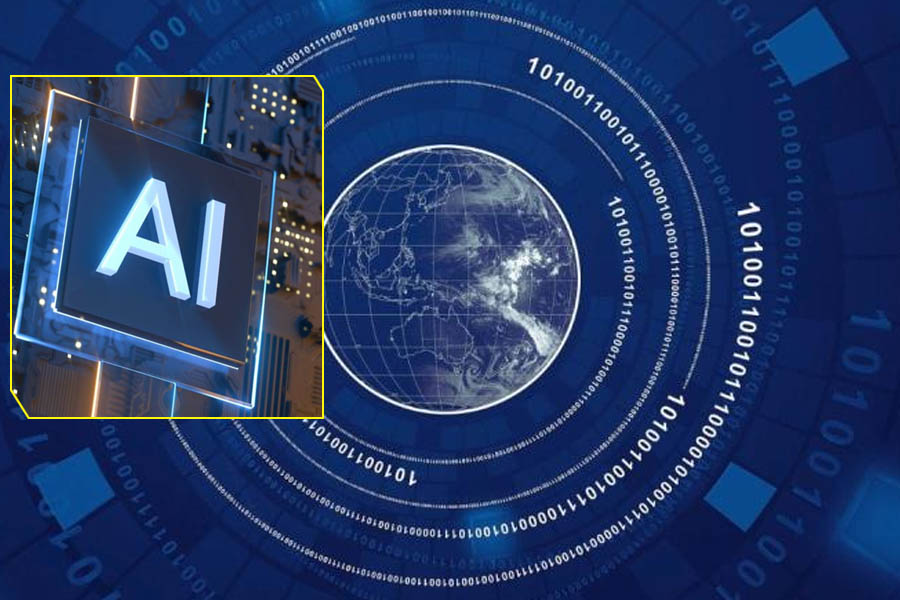
In a world haunted by concerns over algorithmic bias, job displacement, and existential threats from AI, there lies a counterbalance of hope. Many experts argue that AI, specifically, could act as the catalyst for a scientific renaissance by dramatically accelerating the pace of discovery across various fields such as medicine, climate science, and green technology. In the 17th century, the advent of microscopes and telescopes expanded the horizons of scientific inquiry. Researchers began to prioritize their own observations over traditional wisdom, leading to significant progress in fields like astronomy and physics. This era also saw the emergence of scientific journals, enabling the rapid sharing of findings and contributing to innovations such as the pendulum clock and the steam engine, pivotal during the Industrial Revolution. In the late 19th century, the establishment of research laboratories revolutionized science. These centers of innovation facilitated interdisciplinary collaboration and gave rise to breakthroughs like artificial fertilizers, pharmaceuticals, and the transistor, a foundational element of modern computing. Later, computers enabled new forms of science through simulation and modeling, impacting fields from aerospace engineering to weather forecasting.
Fast forward to today, and AI is permeating almost every scientific domain. While the extent of adoption varies, AI is applied in diverse ways: it identifies promising research candidates, sifts through vast datasets, recognizes patterns in complex systems, and even models intricate phenomena such as protein folding and galaxy formation. Notable accomplishments include the discovery of antibiotics, the identification of the Higgs boson, and the detection of regional accents in wolves, among other achievements.
AI's Transformational Potential in Science
The promise of AI extends beyond these achievements, as it has the potential to transform scientific practice itself. Two areas show particular promise:
1. Literature-Based Discovery (LBD): LBD employs AI-driven language analysis to analyze existing scientific literature, uncovering new hypotheses, connections, and ideas. LBD can identify research blind spots, predict future discoveries, and suggest potential collaborators. By promoting interdisciplinary work and fostering innovation at the intersection of fields, LBD is poised to play a pivotal role in reshaping scientific inquiry.
2. Robot Scientists (Self-Driving Labs): These AI-powered robotic systems leverage existing data and literature to formulate hypotheses, perform thousands of experiments, and accelerate research in areas like systems biology and materials science. Robots are impartial, unburdened by bias, and easily replicable, making them valuable tools to scale up experimental research, explore unconventional theories, and venture into uncharted scientific territories.
Overcoming Sociological Barriers
While the potential of AI to revolutionize scientific practice is feasible, it faces sociological hurdles. Human scientists must be willing and able to embrace these tools, necessitating the development of necessary skills and the resolution of job displacement concerns. Positive signs emerge as AI tools transition from the purview of AI researchers to broader acceptance in specialized fields.
The Role of Governments and Funding Bodies
To facilitate this transformation, governments and funding bodies can contribute by advocating for common standards that enable AI systems to exchange and interpret laboratory data. Moreover, supporting research into the integration of AI with laboratory robotics and exploring alternative AI approaches beyond language-based models can further advance scientific AI.
AI: The Artificial Addition to Scientific Progress
In the 17th century, the introduction of new scientific instruments was described as "the adding of artificial organs to the natural." These instruments allowed researchers to explore uncharted territories and enhance knowledge. Today, as AI joins the scientific toolkit, it has the potential to do the same, ushering in a new era of discovery with profound consequences.
AI's Impact on Drug Discovery and More
The transformative potential of AI becomes evident when examining recent accomplishments. In the realm of medicine, AI models have accelerated the discovery of antibiotics, offering new hope in the fight against antibiotic-resistant bacteria. By searching through vast datasets, AI acts as a "metal detector" for potential drug candidates, significantly reducing the trial-and-error phase of drug development.
AI's Influence Across Scientific Fields
AI's influence extends to diverse fields, from predicting protein structures and revolutionizing climate modeling to controlling nuclear fusion reactions. Weather forecasting has been notably improved, thanks to AI models that can generate accurate predictions at a fraction of the time and cost.
AI's Role in Complex Experiments
In the pursuit of nuclear fusion, AI has empowered scientists to control complex experimental setups. Instead of laboriously adjusting numerous variables manually, AI systems can optimize configurations for maximum efficiency and safety.
AI-Powered Generative Models
Generative AI models, including language models like ChatGPT, offer two main scientific applications. Firstly, they can generate data, enhancing low-resolution images or designing molecules atom by atom. These models facilitate the creation of new materials, drugs, and more, albeit with the need for real-world testing and validation.
Secondly, generative models contribute to the efficiency of scientific research by sifting through vast amounts of literature and summarizing key findings. They offer structured information extraction and can replace human focus groups in certain scenarios, streamlining the research process.
AI: A Catalyst for Knowledge Accessibility
AI is poised to democratize knowledge within scientific disciplines. By integrating data from multiple experiments and observations, AI enables theoretical physicists to explore, combine, and reuse information, breaking down silos in scientific research.
While AI has demonstrated its capacity to process data and automate calculations, it struggles with extrapolation beyond known boundaries. There are also limitations, particularly in predicting protein structures and understanding disordered proteins. Nevertheless, AI enhances efficiency and accelerates scientific progress, holding the potential to unlock untold economic and societal value. AI, much like telescopes and microscopes in centuries past, has the potential to revolutionize scientific discovery. By acting as an amplifier for human ingenuity, AI could usher in a new era of scientific breakthroughs, offering solutions to some of the world's most pressing challenges. As the integration of AI into scientific practice continues, the possibilities are boundless, and the benefits could be immeasurable.